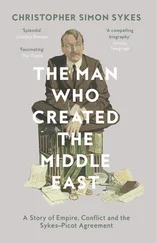I first passed by the site very late one night, after a long drive from Seattle. From my southbound speeding car, I could see the glimmer of lights in the far distance. Behind razor-wire security fences and warning signs and under the protection of armed guards, some eleven thousand workers are now laboring night and day to cleanse the earth and waters of the poisonous radioactivity that so dangerously suffuses it. Some suppose it is a task so vast that it may never be properly completed.
To the south of the main cleanup site, just outside the razor-wire fence but within sight of the still-standing towers of the remaining atomic piles, one of present-day science’s most remarkable experiments is being conducted. It is not secret at all, is unlikely to leave a legacy of any danger whatsoever, and requires the making and employment of an array of the most precise machines and instruments that humankind has ever attempted to construct.
It is an unassuming place, easily missed. I arrived for my appointment in morning daylight, weary after the long nighttime drive. It was cold; the road was quite empty, the main turnoff unmarked. A small notice on the left pointed to a cluster of low white buildings a hundred yards off the road. “LIGO,” the sign read. “WELCOME.” And that was about all. Welcome to the current cathedral, it might also have said, to the worship of ultraprecision.
It has taken decades to design the scientific instruments that are secreted out in the middle of this dust-dry nowhere. “We maintain our security by our obscurity” is the motto for those who fret about the costly experiments sited there, all without a fragment of barbed wire or chain link to protect them. The tolerances of the machines at the LIGO site are almost unimaginably huge, and the consequent precision of its components is of a level and nature neither known nor achieved anywhere else on Earth.
LIGO is an observatory, the Laser Interferometer Gravitational-Wave Observatory. The purpose of this extraordinarily sensitive, complex, and costly piece of equipment is to try to detect the passage through the fabric of space-time of those brief disruptions and distortions and ripples known as gravitational waves, phenomena that in 1916 Albert Einstein predicted, as part of his general theory of relativity, should occur.
If Einstein was right, then once every so often, when huge events occur far out in deep space (the collision of a pair of black holes, for instance), the spreading fan of interstellar ripples, all moving at the speed of light, should eventually hit and pass through the Earth and, in doing so, cause the entire planet to change shape, by an infinitesimal amount and for just the briefest moment of time.
No sentient being would ever feel such a thing; and the slight squeezing would be so minute and momentary and harmless that not a trace could ever be recorded by any machine or device known—except, in theory, by LIGO. And after decades of experiments with instruments that were being ever more refined to greater and greater degrees of sensitivity, the devices now running in the high northwest desert of Washington State and down in the bayous of Louisiana, where the second such observatory has been built, have indeed brought home the bacon.
For, in September 2015, almost a century after Einstein’s theory was first published, and then again on Christmas Eve that same year and then again in 2016, LIGO’s instruments showed without doubt that a series of gravitational waves, arriving after billions of years of travel from the universe’s outer edges, had passed by and through Earth and, for the fleeting moment of their passage, changed our planet’s shape.
TO DETECT THIS, the LIGO machines had to be constructed to standards of mechanical perfection that only a few years before were well-nigh inconceivable and that, before then, were neither imaginable nor even achievable. For it was not always so, this delicacy, this sensitivity, this ultraprecise manner of doing things. Precision was not always there, waiting in the shadows, needing to be found and then exploited for what its early admirers believed would be the common good. Far from it.
Precision was a concept that was invented, quite deliberately, out of a single and well-recognized historic need. It was brought into being for severely practical reasons—reasons that had much to do not with any dreamy twenty-first-century wish to confirm (or otherwise) the existence of vibrations from the collisions of distant stars. Rather, it had to do with a down-to-earth eighteenth-century realization of what was then a pressing matter of physics, and which was related to the potentially awesome power of that high-temperature form of water that since the century before had been known as and defined by the word steam .
Precision’s birth derives from the then-imagined possibility of maybe holding and managing and directing this steam, this invisible gaseous form of boiling water, so as to create power from it, and to demand that by the employment of this power, it perform useful work for the good (perhaps, and with luck) of all humankind.
And all that, what turned out to be one of the most singular of engineering epiphanies, took place in North Wales on a cool May day in 1776—by coincidence, within weeks of the founding of the United States of America, which would eventually make such use of the precision techniques that duly evolved.
That spring day is now generally (though not unanimously) agreed to mark the birth date for the making of the first construction possessed of a degree of real and reproducible mechanical precision—precision that was measurable, recordable, repeatable, and, in this case, created to the tolerance of one-tenth of an inch, or, as it was put at the time, of an English silver coin with a value or worth of just one shilling.
Конец ознакомительного фрагмента.
Текст предоставлен ООО «ЛитРес».
Прочитайте эту книгу целиком, купив полную легальную версию на ЛитРес.
Безопасно оплатить книгу можно банковской картой Visa, MasterCard, Maestro, со счета мобильного телефона, с платежного терминала, в салоне МТС или Связной, через PayPal, WebMoney, Яндекс.Деньги, QIWI Кошелек, бонусными картами или другим удобным Вам способом.












